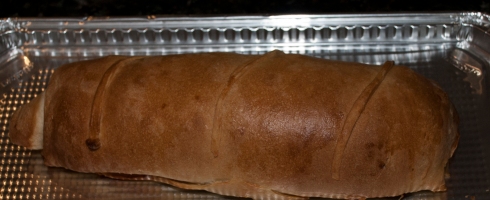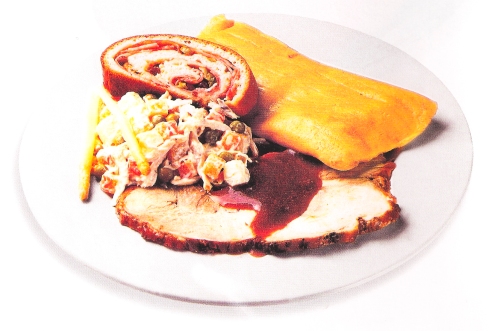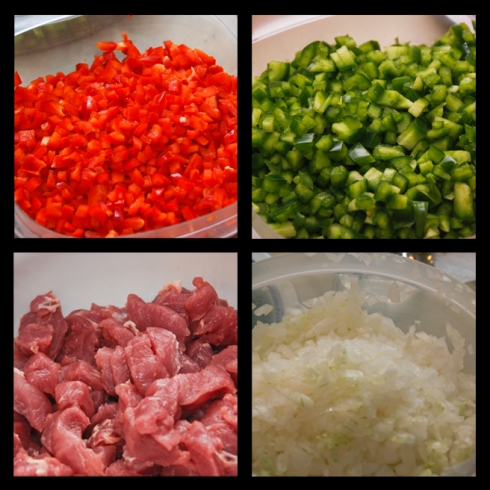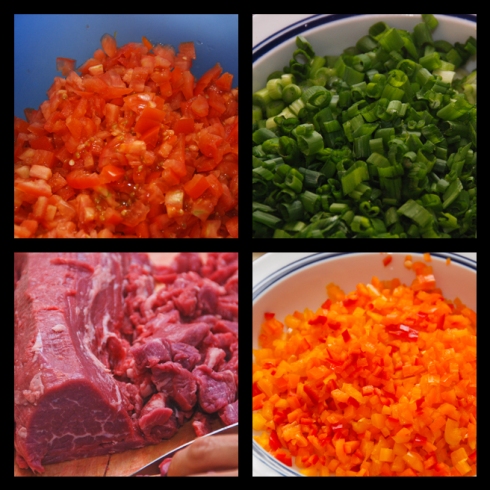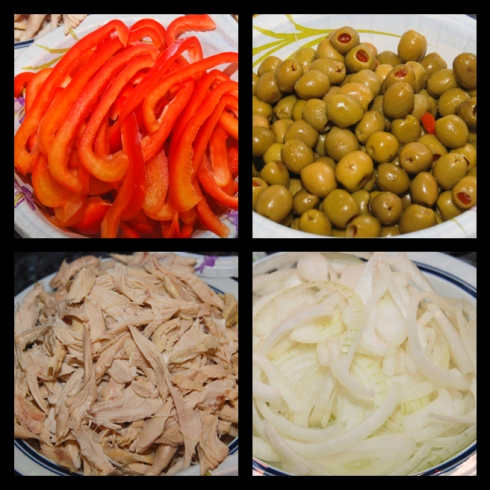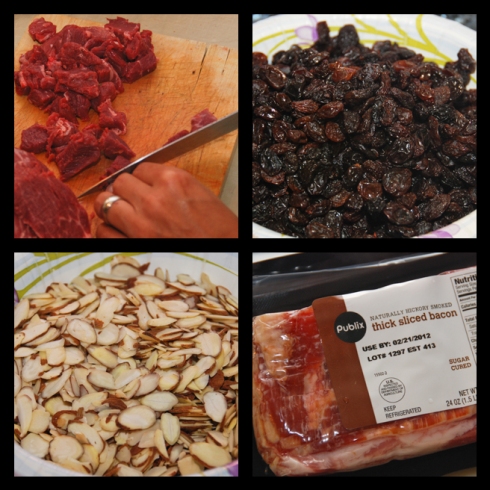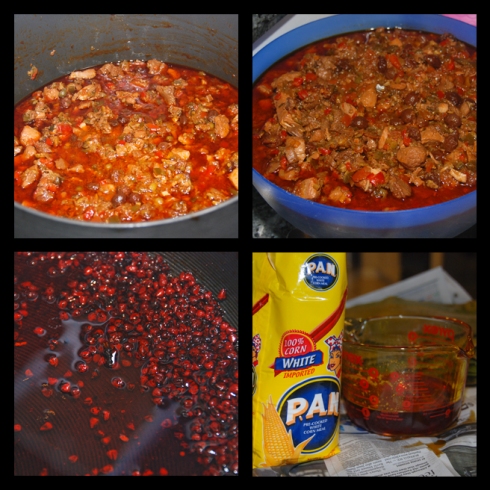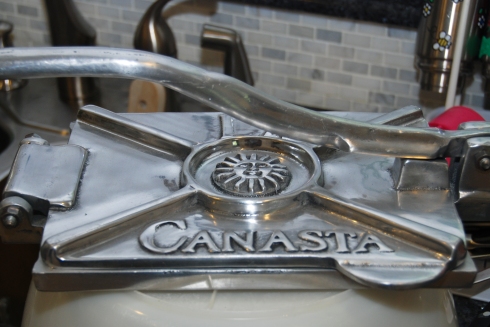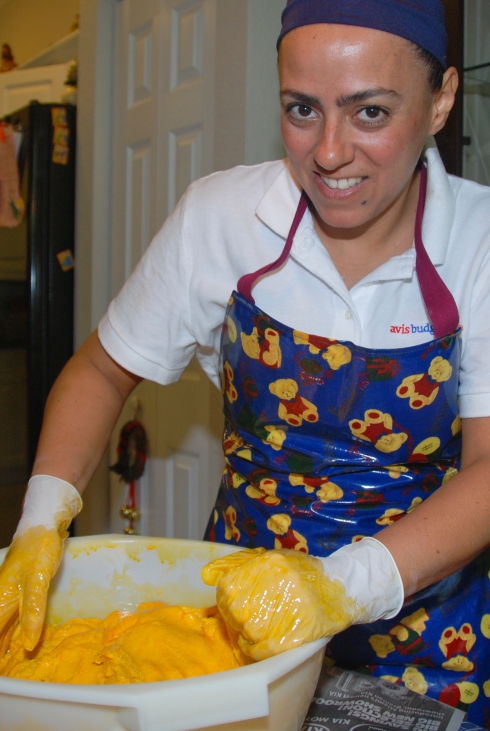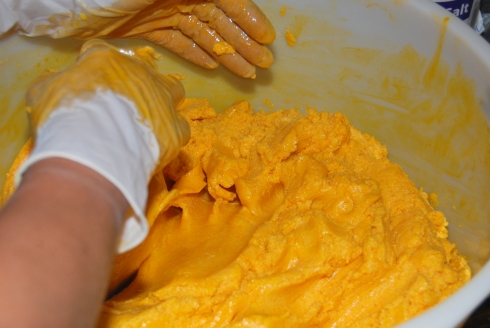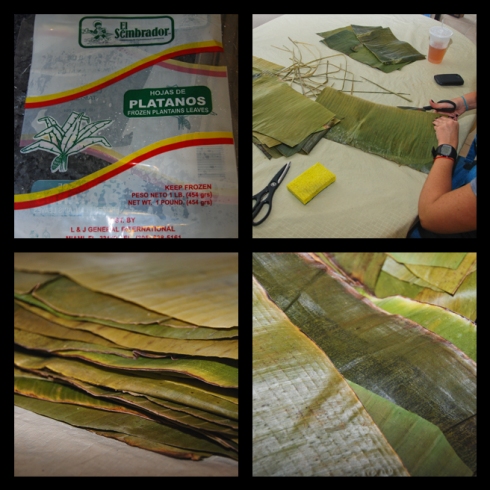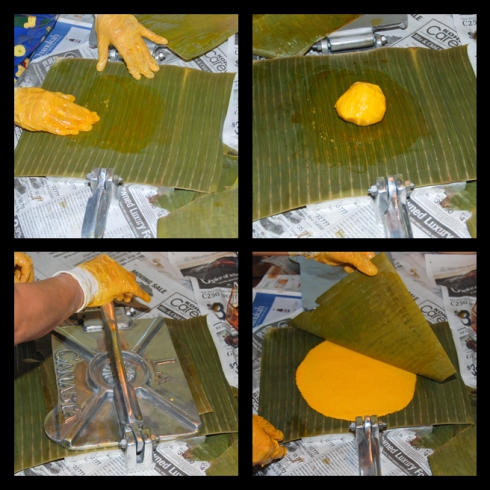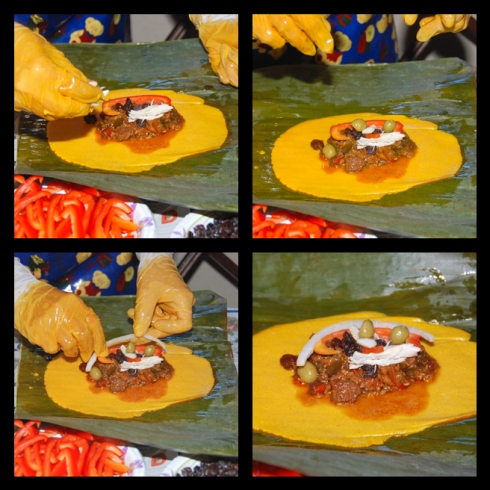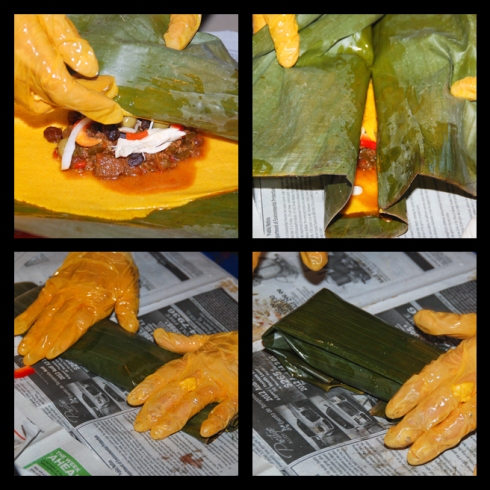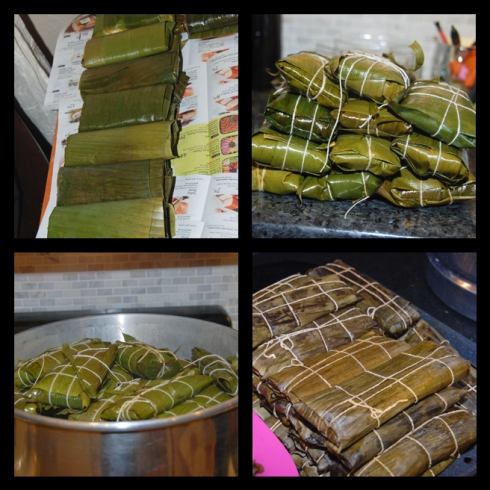It’s beginning to look a lot like Christmas around here. One thing I didn’t have in this blog is Venezuelan Christmas Recipes… until now. I have a very informative post about Venezuelan Christmas celebrations, traditions, dinner and gifts, but I did not have any actual Christmas recipes until now. I wanted to wait until I had a couple of them, so the recipes I will post this month will be all part of the Venezuelan Christmas Dinner Recipe collection, but I have been working on them since 2012. It was hard for me to cook all the recipes at once by myself, so I had to wait for guests like my sister who visited from Venezuela back in 2012, and my grandmother and even my great grandmother to help create and compile all the recipes.
This recipe is for the #2 most important Venezuelan Christmas Dinner component; Pan de Jamón. The first component is obviously the Hallaca, I am hoping to be able to cook some hallacas with the help of the rest of the family this year to be able to add a recipe for them to this collection. It is believed that the production of pan de jamón began in the 1900’s, and has gradually been incorporated in to the Christmas dinner traditions ever since. It is said that it was originally created in a Panadería (a Venezuelan Bakery/Deli/Café) in the capital city, Caracas. First, it was only made with ham filling, then some other fillings where added including walnuts, almonds and even capers, until it became the version that we know today.
The pan de jamón is usually bought at the panadería, however, there are some families who make them at home. So now I am sharing this recipe with you, so you can make it at home yourself, like I did with my sister. I would like to give her a special thank you for her help with this recipe and blog post back in Christmas 2012.
What you need:
For the Dough
– 2 Cups Milk (Room Temperature)
– 1 Teaspoon Sugar
– 1½ Tablespoon Yeast
– 8 Cups of All Purpose Flour
– 1 Stick of Butter (Soft but not melted)
– 1 Tablespoon Salt
– 3 Tablespoons Sugar
– 3 Eggs
For the Filling
– 2.2 lbs. of Boiled Ham (Sliced)
– ¼ Cup Raisins
– ½ Cup Pitted Green Olives
For the Glaze
– 2 Egg Yolks
– 2 Tablespoons Water
– 1 Teaspoon Salt
Preparation:
1. In a large enough mixing bowl, add the milk. Then, dissolve the teaspoon of sugar in the milk and then add the yeast but don’t stir it in. Cover with a kitchen towel and let it rest for about 20 minutes in an area with little to no airflow.
2. After the 20 minutes, add only 4 cups of the flour and mix it very well using your fingers.
3. Make a ball with the dough and leave it in the bowl, cover it with cling wrap and put a kitchen towel on top. Let it sit in an area with no airflow for about 2 hours, or until it doubles in size.
4. After 2 hours, add the rest of the flour and continue to mix it in very well with your fingers, kneading the dough with both hands.
5. If your dough is dry, you can add two tablespoons of cold milk and knead it in. If on the contrary, your dough is too wet, you can sprinkle more dough on top and continue to knead the dough until it is uniform and consistent.
6. Cover again, as before, and let it sit for another 4 hours.
7. Take the dough out of the fridge and sprinkle some more flour on your working table. Add the soft butter, the salt, the rest of the sugar and the eggs (one by one). Knead the dough with all the ingredients very well. Until you have a very well worked dough that is uniform and without clumps. At the end you can lift it up from the table as high as you can, and let it fall on the table repeatedly until the dough easily lifts of the table and doesn’t stick to your hands.
8. Divide the ball of dough in three equal parts. You can cut one small piece and set aside for decorations if you wish. Grab one part and extend it as a rectangle over your working table (be sure to sprinkle your working surface with more flour). Extend the dough using a rolling pin until the dough is about ¼ to ½ an inch.
9. Now its time to add the fillings. Begin with a layer of the ham. Add the raisins and olives. Make sure that they are well distributed. Remember to divide the olives and raisins in three equal parts for each bread. Be sure to leave an empty space of about ½ and inch border from the edge of your rectangle without any filling.
10. Grab one end of your dough rectangle and begin to roll the entire thing from one end to the other.
11. Close the ends with your fingertips. At this point you can use that little bit of dough for any decorations.
12. Grease a baking sheet with butter and place the bread on the sheet. Cover the bread with a kitchen towel and let it sit for another hour.
13. Preheat your oven to 400°F.
14. Place the bread in the oven (one at a time) for 30 minutes.
15. Take the bread out of the oven and using a brush, cover the top of the bread with the glaze mixture (mix all the glaze ingredients in a bowl).
16. Place the bread back in the oven for another 10 minutes.
¡Buen Provecho!

